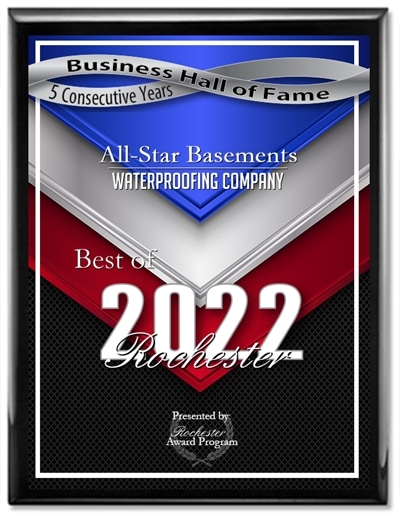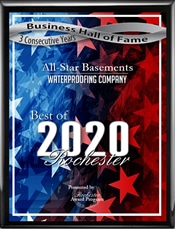Have you considered the advantages of contracting a professional for basement waterproofing? They bring a wealth of expertise to identify and fix potential issues, like foundation cracks and drainage problems, that you might overlook. Not to mention, they come equipped with specialized tools that you won’t need to hassle with. Plus, their work can help prevent future problems, protecting your home’s value. And if that’s not enough, many offer warranties and aftercare services. Intriguing, isn’t it? You might be wondering how each point plays out. Let’s unpack these benefits one by one, shall we?
Expert Knowledge and Experience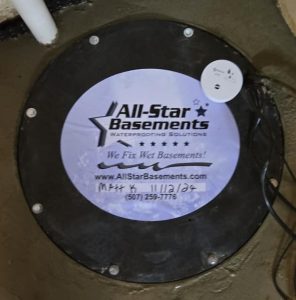
In the vast world of home improvement, few tasks require as much expert knowledge and experience as basement waterproofing.
It’s not just about slapping on some sealant and hoping for the best. This task, when done correctly, requires an in-depth understanding of construction, soil types, water flow, and the potential damage that can be caused by moisture.
Think about it. You’re dealing with the foundation of your home. Any mistakes in waterproofing can lead to significant structural problems down the line.
That’s where the experts come in. With their years of experience, they can quickly identify potential issues, like cracks in the foundation or poor soil drainage, that you might miss.
Moreover, understanding the right materials and methods for your specific situation is essential.
Different basements and climates require different solutions. A professional knows which sealants work best in different situations, how to properly install a sump pump, and when exterior waterproofing might be necessary.
Access to Specialized Equipment
Beyond the expertise and experience, having access to specialized equipment is another major advantage of hiring professionals for basement waterproofing. You may think you’re saving money by going the DIY route, but without the correct tools, you’re likely to run into difficulties.
Professional waterproofing companies invest in high-end, specialized equipment that tackles the job with more precision and effectiveness. From high-pressure water jets to dehumidifiers, sump pumps, and sealants, these aren’t your regular household tools. They’re specifically designed to handle water issues, even in hard-to-reach areas.
Chances are, you don’t have this equipment lying around in your garage. Buying these tools yourself can be expensive, and you mightn’t even know how to use them properly. Plus, there’s the challenge of storage and maintenance.
Hiring professionals guarantees you don’t have to worry about these aspects. They’ll bring all the necessary equipment, and they’ll know how to use it to its full potential.
This means a thorough, more reliable job. Not only does this result in a dry, safe basement, but it also adds to the value of your home.
Efficiency and Time Management
Switching gears slightly, let’s consider the efficiency and time management aspect of hiring professionals for basement waterproofing. You might think you’re saving money by tackling the job yourself, but have you considered the time you’ll need to invest?
Professionals have the experience to get the job done quickly and efficiently, freeing up your time for other important tasks.
Think about it. Waterproofing a basement isn’t just about slapping on some sealant. It’s a meticulous process that requires proper planning, preparation, and execution. The experts know what to look for and how to address each issue effectively. They’ve done this countless times, so they’ve got it down to a science.
You’re not just paying for their service, you’re also paying for their expertise.
Additionally, time is often of the essence when dealing with water damage. The longer you wait to address the issue, the worse it can get. A professional can assess the situation immediately and take swift action, saving you from escalating problems.
Potential Future Damage Prevention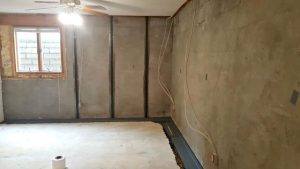
Have you ever considered the potential future damage that could be avoided by professionally waterproofing your basement? Let’s explore this issue.
Water damage isn’t merely an inconvenience, it’s a serious threat to your home’s structure and your personal belongings. It can lead to mold growth, which poses health risks, and can even compromise the structural integrity of your home.
When you hire a professional to waterproof your basement, you’re investing in peace of mind. You’re averting a plethora of potentially costly and hazardous situations. Imagine the expenses involved in repairing a severely water-damaged basement or replacing precious belongings. You’re saving yourself from these financial burdens by taking preventative measures.
Furthermore, water damage can decrease your property’s value, making it harder to sell in the future. A waterproofed basement, on the other hand, is a significant selling point. It signals to potential buyers that the home has been well-maintained and cared for.
In short, professional basement waterproofing prevents future damage, saves you money and hassle in the long run, and even boosts your property’s value. It’s a wise investment for any homeowner.
Warranty and Aftercare Services
When it comes to basement waterproofing, understanding the warranty and aftercare services provided is essential. After all, you’re making a significant investment and you want assurance that your hard-earned money isn’t going down the drain.
Professional basement waterproofing companies often provide a warranty on their services. This usually covers any defects in the materials used or if the waterproofing fails within a specific time frame. It’s your safety net, ensuring you won’t be left high and dry should anything go awry.
But it’s not just about the warranty. Aftercare services are equally important. A good company won’t just seal up your basement and walk away. They’ll provide follow-up inspections, maintenance services, and be on hand to answer any queries or concerns you might have.
Remember, basement waterproofing is a long-term solution, not a quick fix. So, it’s vital to choose a company that stands by its work and supports you in the years to come.
Conclusion
You’ve seen the compelling reasons to hire a pro for basement waterproofing. They’ve got the expertise, the tools, and the foresight to prevent future damage. Plus, the warranty and aftercare services offer you peace of mind. Don’t gamble with your home’s value. Trust the experts to safeguard your basement against water damage. It’s a smart investment that really pays off. So, why not give it a shot? You’ll see the advantages are clear and worth every penny.
Contact the Professionals at All-Star Basements Today! 507-259-7776

All-Star Basements is Locally Owned and Operated and based out of Rochester, Minnesota. We cover Southern Minnesota including the Twin Cities area, Western Wisconsin and parts of Northeast Iowa. Our team is committed to solving our customers’ basement waterproofing, foundation repair, or crawl space needs and offering multiple solutions to choose from.
As a proud member of the Basement Health Association and the National Waterproof Members of America, we have the best products available to solve your leaky basement, seepage, or flooding issues. Our lineup also includes multiple crawl space solutions.
If you have foundation problems that need any kind of repair, we can help! We feature the nationally renowned Grip-Tite Foundation Systems, which has a long history over 90 years of fixing homeowners’ foundation repair issues- from walls that are buckled, tipping or cracked and bowing.
At All-Star Basements, we are committed to providing multiple solutions to choose from to help fix any basement problem you may have. We are very proud of our Better Business Bureau A+ rating and take great pride in caring for all of our customers’ needs- big or small, we do it all!


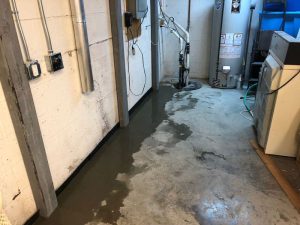
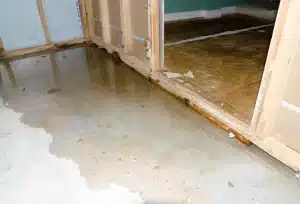

 Water infiltration in basements can weaken the foundation over time. When moisture accumulates around the foundation, it increases hydrostatic pressure, putting stress on
Water infiltration in basements can weaken the foundation over time. When moisture accumulates around the foundation, it increases hydrostatic pressure, putting stress on  7. The Importance of Hiring Professionals for Waterproofing
7. The Importance of Hiring Professionals for Waterproofing
 Hydrostatic Pressure: When the soil around your foundation becomes saturated with water, it exerts pressure on the foundation walls, causing water to seep through cracks and joints.
Hydrostatic Pressure: When the soil around your foundation becomes saturated with water, it exerts pressure on the foundation walls, causing water to seep through cracks and joints.








